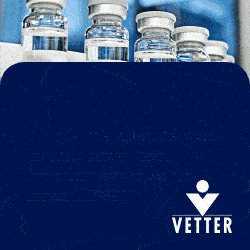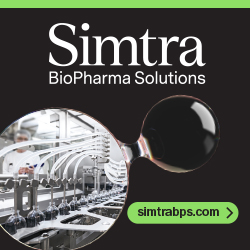Search Results for: CONTRACT MANUFACTURING Flexibility in an
Articles
CONTRACT MANUFACTURING - Flexibility in an Evolving Market April 3, 2017
Matthew Moorcroft, PhD, warns that in the fast-moving pharmaceutical industry, change is the only constant. And to keep up with market developments, small molecule manufacturers must first understand the trends.
SPECIAL REPORT - Prefilled Syringes & Parenteral Contract Manufacturing: Improving for Flexibility & Customization April 30, 2013
Special Feature: Contributor Cindy H. Dubin speaks with prefilled syringe manufacturers as well as contract parenteral manufacturers who share their thoughts about the delivery challenges associated with high-viscous, high-volume formulations.
Kincell Bio & Imugene Announce Strategic Manufacturing & Process Development Partnership April 16, 2024
Kincell Bio to acquire Imugene’s North Carolina manufacturing facility for up to $6M USD in upfront and milestone-driven payments over 3 years….
CDMO Alcami Expands Fill/Finish Manufacturing Capacity With New Charleston Line February 8, 2024
Alcami Corporation recently announced the strategic expansion of its sterile fill/finish manufacturing capacity with the addition of a new sterile fill/finish line with isolator and two lyophilizers at….
Ascendia Pharmaceuticals Expanding Injectable Manufacturing Capabilities in 2024 January 31, 2024
Ascendia Pharmaceuticals is all set to unveil its new injectables manufacturing opportunities with the launch of a state-of-the-art sterile cGMP production facility in March 2024…..
SPECIAL FEATURE - Outsourcing Formulation Development & Manufacturing: Putting Customers First June 5, 2023
Contributor Cindy H. Dubin speaks with several leading CDMOs from around the globe on their unique development and manufacturing capabilities and technologies, and presents real-world examples of how they have put these to use to produce innovative compounds, lower development costs, and shorten time to market.
EXECUTIVE INTERVIEW - Credence MedSystems: Implementing a Flexible Manufacturing Line to Deliver Innovation in Drug Delivery to the Pharmaceutical Industry October 3, 2022
Jeffrey Tillack, Chief Operating Officer at Credence MedSystems, discusses the challenges being addressed by his innovative technology and the role its new Flex Line will play in the company’s scaling strategy.
Jubilant HollisterStier Enters Cooperative Agreement With US Government to Expand Critical Vaccine Manufacturing Capacity June 3, 2022
Jubilant Pharmova Limited recently announced that Jubilant Pharma Limited, a wholly owned subsidiary of the company, through one of its wholly owned subsidiaries, Jubilant HollisterStier LLC, (JHS) a leading US-based….
SPECIAL FEATURE - Outsourcing Formulation Development & Manufacturing: Understanding Critical Attributes Earlier in Development Leads to a More Robust Drug Product June 1, 2022
Contributor Cindy H. Dubin speaks with industry leaders on how drug sponsors and CDMOs are collaborating earlier, and highlights how third-party contractors are navigating material shortages and how the industry is shifting to address different therapeutic targets and molecules, such as mRNA.
WuXi STA Launches its First Parenteral Formulation Manufacturing Line January 21, 2022
WuXi STA recently announced its first parenteral formulation manufacturing line at the Wuxi city site is now in commission. This wholly...Metrics Contract Services Appoints Commercial Manufacturing BD Lead January 4, 2022
Metrics Contract Services, a full-service contract development and manufacturing organization (CDMO) in novel oral solid dose (OSD) products, has appointed...Curia to Expand US Commercial Manufacturing Capability, Investing More Than $35 Million August 19, 2021
Curia, formerly AMRI, a leading contract research, development and manufacturing organization, recently announced plans to expand its commercial manufacturing capacity at its….
Metrics Contract Services Expands With New Suites & Equipment August 4, 2021
Metrics Contract Services (Metrics), a full-service global contract development and manufacturing organization (CDMO), has recently expanded its novel oral solid dose commercial facility in Greenville, NC, adding 3,760….
OSE Immunotherapeutics Announces Manufacturing Agreement With Cenexi July 1, 2021
OSE Immunotherapeutics and Cenexi recently announced the signature of an agreement whereby Cenexi will manufacture clinical batches of CoVepiT, OSE Immunotherapeutics'...SPECIAL FEATURE - Outsourcing Formulation Development & Manufacturing: Meeting Demand for Biologics & Specialty Drugs June 2, 2021
Contributor Cindy Dubin highlights the formulation development and manufacturing offerings from some of the leading CDMOs to address a myriad of challenges – from complex compounds to poor solubility to dual-release profiles.
SPECIAL FEATURE - PFS & Parenteral Manufacturing: How COVID-19 Changed the Market May 3, 2021
Contributor Cindy Dubin explores how device developers and parenteral contract development and manufacturing organizations (CDMOs) are addressing current challenges, as well as advancements in customized device design, the continuous effort to incorporate safety and human factors, and how COVID-19 is shaping the future of the market.
INJECTABLES MANUFACTURING - Manufacturing Injectable Devices: Why Modern Means Modular May 3, 2021
Raffaele Pace, MMe, MBA, reviews how today’s drug delivery devices must be more mobile, less intrusive, and simpler than ever before – all while remaining cost competitive.
Quotient Sciences Acquires UK-Based Contract Development & Manufacturing Organization February 11, 2021
Quotient Sciences, the drug development and manufacturing accelerator, recently announced it has acquired Arcinova, the UK-based multiservice contract development and….
















